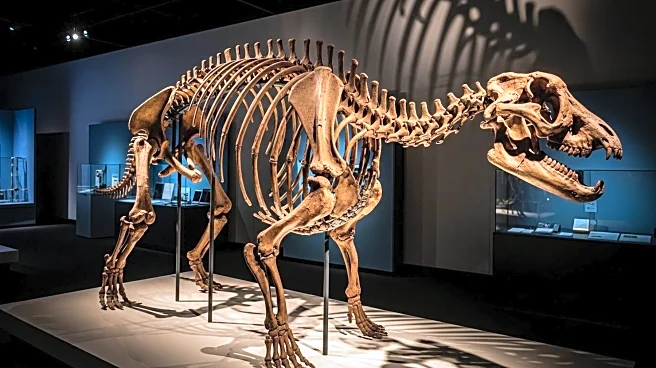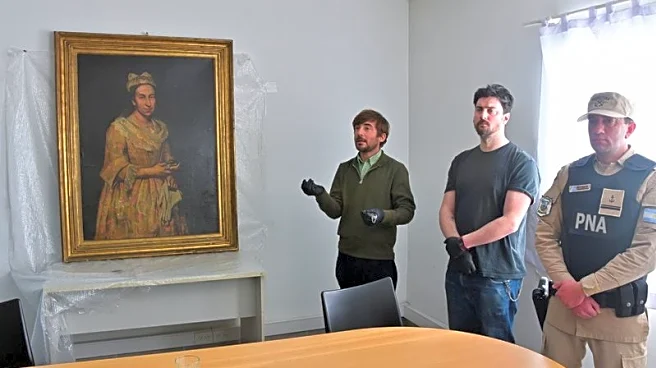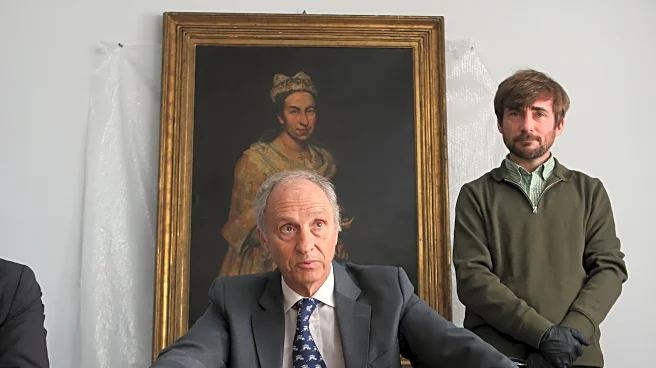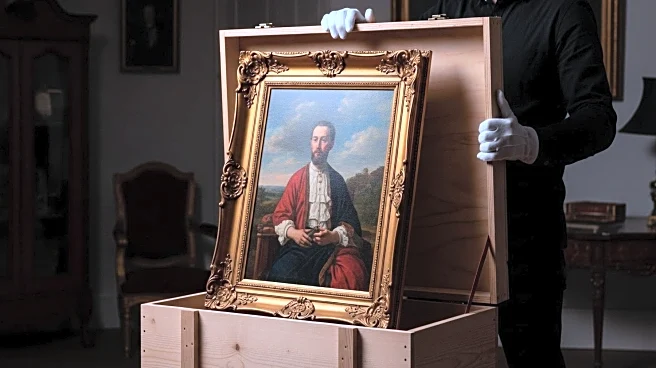What is the story about?
What's Happening?
Scientists in Argentina have unearthed the skeleton of an extinct hypercarnivore named Kostensuchus atrox, a peirosaurid crocodyliform that lived approximately 70 million years ago during the late Cretaceous period. This apex predator, resembling a giant crocodile, measured up to 11.5 feet long and weighed about 550 pounds. The discovery, made in the Chorrillo Formation, marks the first crocodyliform found in this region and is the most complete fossil of its kind. The skeleton includes the skull and jaws, with teeth designed for puncturing and slicing flesh, indicating a diet primarily composed of meat, including dinosaurs. The research, published in PLOS One, highlights the predator's role in its ecosystem and expands the known range of peirosaurid crocodyliforms.
Why It's Important?
The discovery of Kostensuchus atrox provides significant insights into the biodiversity and ecological dynamics of the late Cretaceous period. As a major predator, this species played a crucial role in its habitat, influencing the population and behavior of other species, including herbivorous dinosaurs. Understanding the range and adaptations of such ancient predators helps paleontologists reconstruct past ecosystems and evolutionary patterns. The findings also contribute to the broader knowledge of crocodyliform evolution, showcasing how different groups independently evolved similar traits over time. This research may inform studies on how hypercarnivores respond to environmental changes and mass extinctions.
What's Next?
Researchers plan to further analyze the Kostensuchus atrox fossil to uncover more details about its diet and lifestyle. Isotope analysis of the teeth could reveal information about its hunting grounds and dietary habits. Additionally, imaging the internal structure of its bones may provide insights into its growth rate and age. The team also intends to investigate abnormalities in the vertebrae with the help of veterinary pathologists. These studies could unveil more secrets about this ancient predator and its ecological impact.
AI Generated Content
Do you find this article useful?

















